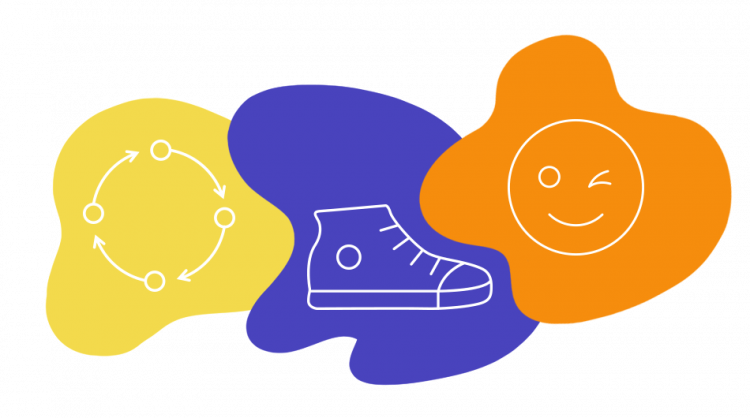Memorization is a complex process. Understanding and knowing about how memory works and how our students learn is of utmost importance and should be a priority for every teacher.
How to Distinguish Dominant Memory Types in the Virtual Classroom
A teacher’s role is not only to pass on information, but also to learn. Some of the most important knowledge that we can obtain while teaching comes by observing and analyzing student reactions and behavior; this knowledge allows a teacher to change and adapt the teaching process in a way that is the most effective for the particular learners.
Determining the dominant memory type for a person takes time and effort.
What can we pay attention to?
- Notes. If a teacher is really paying attention to their students, they can start to spot the kinds of notes that their students are taking. If they use colored pens and markers, then it can be concluded that this student is more of a visual type of learner. On the other hand, if a student writes down the information in class and then later rewrites it in another place, this probably speaks more of a well-developed repetition memory type. Furthermore, if a teacher often hears questions about similar ideas from other fields of knowledge, it is quite possible that they are working with a person who has an associative memory type.
- Interest. Students with different memory types are interested in different parts of a lesson. For example, a student that memorizes best by hearing will pay greater attention to a task that involves more listening than others.
More Memory Types in the Virtual Classroom
In addition to the most common memory types mentioned in the previous article, here are some other frequently encountered types:

- Repetition memory
- Motor activation memory
- Emotional memory
Repetition Memory
This memory type is possibly connected to bad school memories for many learners. It has long been believed by educational systems around the world that repetition is the best path to memorizing larger chunks of information. As a result, many people can still remember being made to write or repeat the same word, phrase, or formula over and over.
Actually, there are some learners that feel stimulated by this type of practice; teachers need to be able to identify these students and adjust the lesson accordingly.
How to help students with this memory type in the virtual classroom
Today, repetition is rarely used by educators while teaching classes, but the virtual classroom can successfully meet this particular demand when needed.
- Remind your repetition-memory students that in most systems, like VEDAMO’s, they are able to rewatch the recorded lesson as many times as they need to.

- Try and create different activities using the same materials; for example, use a game or an exercise using the same words, phrases, and images.
- End a session and begin the next one in the same way several times; for example, use a simple sentence or theory that is repeated by you and then by your student.
Motor Activation Memory
Motor activation has an immediate connection with body intelligence. People with pronounced active memory are usually more physically active and see a connection between movement and learning that is not obvious to others. They combine action and memorizing by walking around while studying, listening to related materials while doing sports, and even creating small routines (dances, combinations of exercises) in which every movement stands for a piece of information.
How to help students with this memory type in the virtual classroom
These learners are possibly the most difficult group to engage in the virtual classroom environment. To them, online tutoring seems like even more time spent in a static position in front of a computer.
- Encourage your motor activation memory students to go outside. Most virtual classroom solutions, like the one offered by VEDAMO, can be used on mobile devices – so tell these students to get mobile.
- Give small, regular breaks during the session in order to create space and time for movement.
- Incorporate music into the lesson to allow time for chair dancing.

Emotional Memory
This memory type is possibly the most universal of all. Our brains are programmed to remember positive experiences and to quickly block out anything unpleasant. The same goes for memories of time spent learning: if we enjoy the process, there is a higher chance that we will be able to remember the session’s subject and vice versa.
How to help students with this memory type in the virtual classroom
The virtual classroom allows for multiple opportunities to make a lesson more joyful by:
- Using more colors to brighten the scene
- Using funny images and sketches to create laughter
- Playing videos and music that create positive emotions
